Outflow and Dark Bands at Active Region Core Boundaries
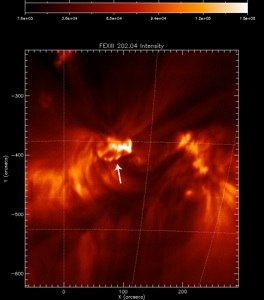
AR 11112 EIS intensity and Doppler Velocity from Scott et al. 2012 (in preparation)
AR 11112 EIS intensity (top left), line width (top right), Doppler Velocity (bottom left), and Red-Blue (R-B) asymmetry (bottom right) from Scott et al. 2012 (in preparation)
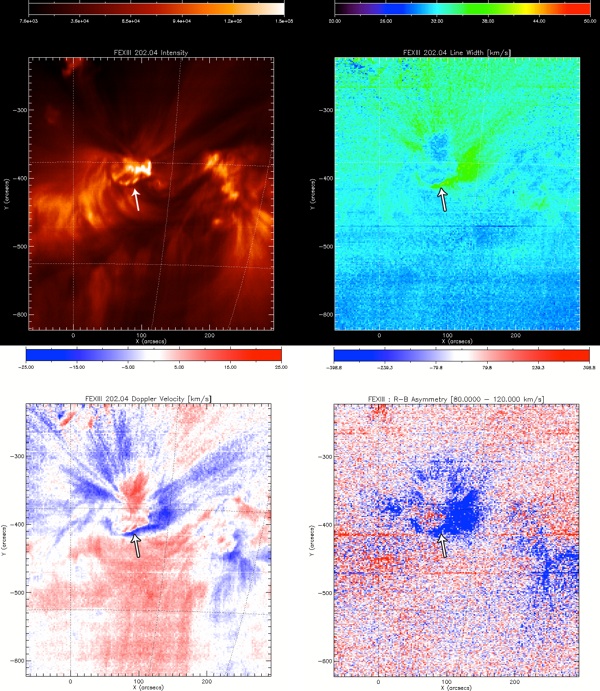
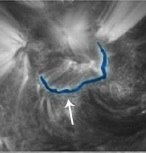
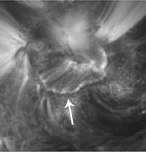
When magnetic field emerges into a pre-existing field it creates its own connectivity and topology. As a newly formed arcade expands it “pushes” up against the pre-existing field that has a different topology. These two topologies (existing and emerged) are separated by a narrow band of low intensity. This “dark band” is also coincident with large blue-shifted Doppler velocities (outflow), increased non-thermal broadening and large R-B asymmetries (possibly outflow > 80km/s). It is interesting that these same signatures are observed in large areas at the edges of active regions generally associated with open field. What causes these outflows in the large low intensity areas is unknown.
Here we investigate narrow dark band regions that form at the boundary between the bright arcade loops at the core of active regions and the outer larger periphery loops. Since the same spectral signatures are found in large areas at the edges of ARs and within a narrow dark band (1-3 Mm), it is suggested that this narrow region offers a lower bound to the size scale at which this phenomena operates.
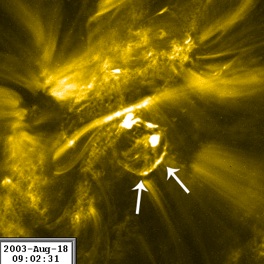
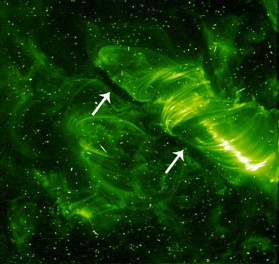
Here are a few more examples of the narrow dark bands at the edges of arcade like active region cores
These are TRACE 171 and 195 images
Mouse over image to view Doppler image
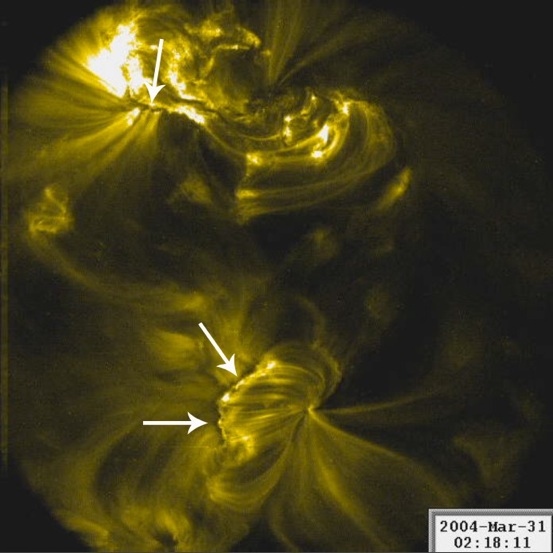
The narrow dark region has been shown
